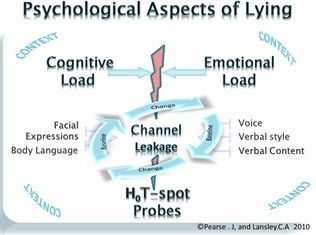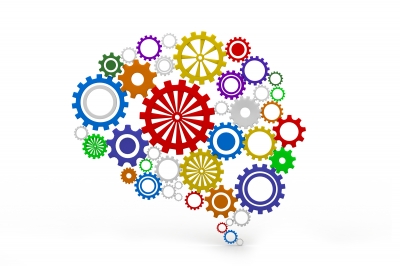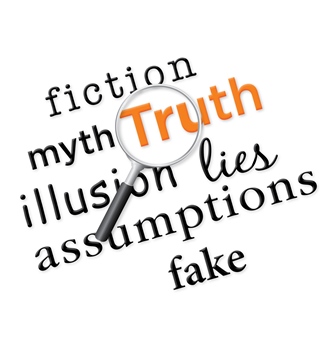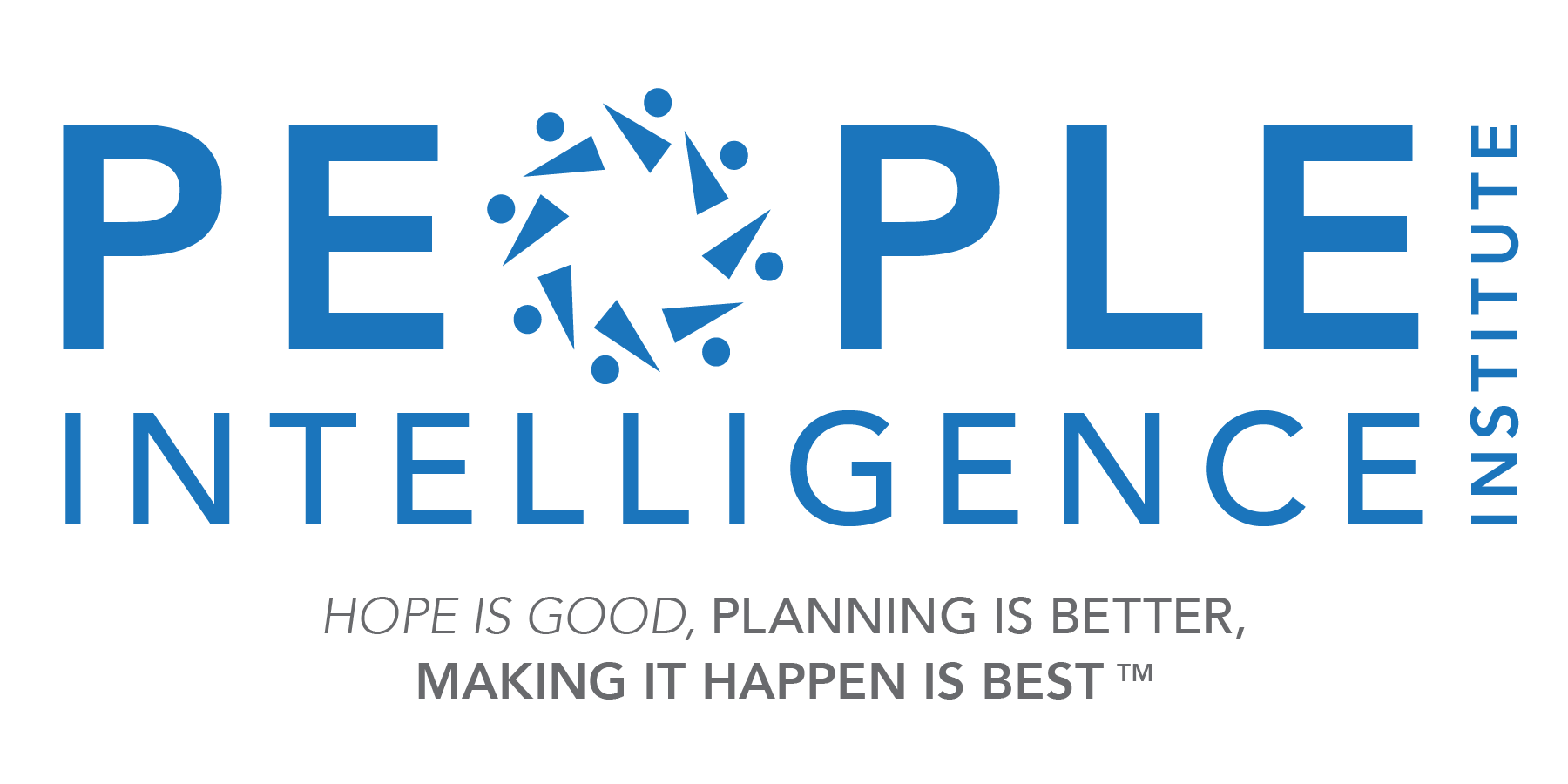"This course has helped train my eye and my mind to see more emotions in others, and as a result, have more successful interactions with others when they are emotional. I am more likely to notice things earlier, before escalation, when the potential to make better choices is stronger."
Read MoreMore Than Just Words: The 5 Channels of Communication
 The human face tells a fascinating story about the nature of physiology and psychology. As a mode of communication, the amount of information that the human face relays through facial expressions is endless. While the face can display over ten thousand unique facial expression combinations, there are only a handful of specific expressions that are proven to communicate the same universal emotional meaning. Happiness, anger, sadness, contempt, disgust, surprise, and fear make up the 7 basic and universal emotions that all people regardless of race, ethnicity, culture, gender, religion, and age express using the same specific muscle combinations on the face.
The human face tells a fascinating story about the nature of physiology and psychology. As a mode of communication, the amount of information that the human face relays through facial expressions is endless. While the face can display over ten thousand unique facial expression combinations, there are only a handful of specific expressions that are proven to communicate the same universal emotional meaning. Happiness, anger, sadness, contempt, disgust, surprise, and fear make up the 7 basic and universal emotions that all people regardless of race, ethnicity, culture, gender, religion, and age express using the same specific muscle combinations on the face.
Our facial expressions are designed to communicate our most basic yet necessary emotions for survival. Consider the emotion of sadness for example. In a state of sadness our bodies become depressed, the energy is depleted and our ability to respond or defend are incapacitated. The facial expression of sadness becomes the primary communication mode that signals to others that we need help. Looking at a grief stricken parent who has lost a child will easily trigger for most observers an overwhelming sensation of empathy. On the other hand an angry expression often serves as a warning sign and in certain situations can be a life saving forewarning especially in physical attacks.
The face is a primary channel of communication rich in information about the other person and also highly accurate in the nonverbal messages that is sends to observers. Besides the basic emotions it also provides clues to cognition, regulates conversation, and with emblematic gestures, replaces the spoken word. Despite the high accuracy and reliability of nonverbal many people do not capitalize on this rich source of information and focus solely on the spoken language. With the sophistication of common verbal language the communication focus has shifted to primarily gathering information from a single channel – words, whereas a message in its fullest form is often generated from up to 5 channels; face, body, voice, verbal content and verbal style.
Let’s briefly examine the communicative relevance of each of the 5 channels:
1. Facial expressions – are a result of the coordinated movements of over 40 muscles in the face that in specific combinations signal actual emotional experiences. These expressions in their normal and macroexpression form are recognizable by all of us. Research by Hager and Ekman (1979) has shown that the smile, associated with signaling the happy emotion, is the most easily recognizable facial expression from distances as far as 147 feet only closely followed by surprise. Under certain circumstances however, these emotional expressions appear in micro time, in less than a fifth of a second, revealing a fleeting glimpse into a person’s true feelings. Microexpressions signal a person’s suppression or attempt to conceal their true emotions.
2. Body language – consists of the behaviors and movements of the body other than the face that can also offer a glimpse into a person’s thoughts and feelings. It includes head movements such as a nod or head shake to signal yes or no answers. Body language also includes hand movements, posture changes, and many other gestures some of which have scientific merit while others have developed from myths. Body language unlike facial expressions is heavily influenced by culture.
3. Voice – this is the dominant channel of communication. It includes the tone, volume, pitch and speed of speech and carries a lot of communicative weight. Consider the following sentence “I didn’t tell her you were stupid”, depending on where the emphasis falls, the sentence can take on several different meanings but the words remain identical.
4. Verbal content – encompasses the actual words we speak or write. Much research has explored the area of verbal content and developed methods of analyzing credible vs non-credible statements. While these methods have been primarily developed to assess the written word, these same techniques can be applied to develop a more critical ear to spoken language in real time conversation as well.
5. Verbal style – includes such elements as speech pauses, changes in interruption of the flow of speech or changes in the structure of a sentence or even the amount of detail included in an account. This channel is the most heavily dependent on a person’s baseline mode of speaking and the changes from baseline that occur in relevant situations.
Tuning into only one channel can put the receiver at risk of only getting part of the message further increasing the risk of misunderstanding the other person or even being deceived.
It is no secret that deception is pervasive in most societies and has played an instrumental role in the survival of evolving human beings. As such, humans have developed a keen ability to deceive with words and trickery and to also mask, suppress, and fake facial expressions and body movements in order to lie, cheat, manipulate, and influence others. However, over 40 years of research in emotion and expression, conducted by Dr. Paul Ekman and other researchers alike, has revealed clues from each of these 5 channels that can expose not only true emotions but be critical clues to uncovering deception.
Because many nonverbals are directly linked to our autonomic nervous system (ANS), they are equally likely to appear involuntarily when emotions run high. Not being in complete control of your facial muscles for example, means that true emotions can leak out via small flicker-like expressions or micro expressions on the face revealing genuine internal feelings. Even practiced liars have been caught giving themselves away through small and very brief but observable expressions of emotion.
The science behind facial expressions of emotion and nonverbal communication has been around since the 1960’s, but only recently has it made its way into the training curriculum of law enforcement, business professionals, psychologists, counselors, medical professionals, market researchers and even to a prime-time hit TV show called Lie to Me.
Specific training in reading nonverbal and verbal communication cues as part of a holistic communication mode is a skill in high demand across many disciplines where face to face communication is of high importance due to its low-tech, un-invasive approach to reading people. It’s a tool that anyone can carry with them and use in any encounter whether it is a formal interview or a face-to-face casual interaction on the street.
Why You Can't Spot Lies
 "I knew he was lying all along; I should have trusted my gut."
"I knew he was lying all along; I should have trusted my gut."
Who hasn't said something like this after looking back at a situation, whether professional or personal? Once the whole truth has been revealed we like to reconstruct the events and look for the 'aha' moment that confirmed our suspicions. Once we know the lie we like to think we knew it in the moment. But did we really? Hindsight isn't always 20/20.
According to the scientific data, most of us aren't much better at detecting lies than flipping a coin, roughly 54% (Bond and DePaulo 2006). So what makes us so sure after the fact?
Let's back up. Although there are many complicated reasons why we may miss the truth, such as circumstances, limited process time, and our expectations about the outcome, there are cognitive biases that influence our tendency to accept what we've been told as the truth. Here are just a few:
· Visual Bias - the tendency to place more emphasis on visual clues than linguistic or inflection, tone and other auditory influences.
· Truth Bias - the tendency to overestimate other's truthfulness.
· Demeanor Bias - the tendency to judge another's communication style as being honest.
Our innate biases make it particularly difficult to detect lies in those we are closest to, which may seem counter-intuitive until you consider just two factors:
· The stakes are often higher in personal relationships (cheating spouse, teen drug user) so, given the possible consequences, we want to believe the other person.
· If we love the person we tend to give them the benefit of the doubt.
To detect dishonesty you must understand that emotions are the drivers of certain behaviors. Sometimes people are open and honest about their emotions and sometimes they attempt to conceal them. Yet, regardless of motivation, desire or reason - emotions rule!
Have you ever watched professional bull-riding? Those massive animals are constrained by a small pen, ropes, leather and a team of cowboys. They are bristling, coiled to break free and assert their alpha influence. Emotions are like bulls in the chute; they just need to get out and show themselves and they do so despite a person's best efforts to control them. They are conveyed through demeanor, voice, movement and especially through micro-facial expressions.
Emotions are most observable through the face. We can all picture or imitate a sad, angry, fearful or happy face, but we may not always want to show these emotions in a given situation. But in real interpersonal exchanges they can't be held back. So they leak out; they reveal themselves. They tell us the truth behind the facade. The problem is these expressions of emotion typically flash on and off the face so quickly (under 1/2 a second) we cannot see them with our conscience brain unless we know what to look for.
The good news is our brains are startlingly perceptive. The science of rapid cognition (Gladwell 2007) reveals that our brain sees these micro-expressions on a sub-conscious level and reacts to them. These reactions manifest themselves to us through our own emotions. So for example, the envious co-worker who wanted your promotion may congratulate you, but the disdain, disgust or anger they feel toward you is leaked out through a micro-facial expression. Your gut reacts. You feel awkward, uncomfortable, perhaps even angry and you aren't sure why. It's just something you feel.
So you thought he was lying all along? You were probably right. You just didn't know why you knew. Until the whole truth was revealed you relied on visceral feelings and sensations.
The better news is we can learn to recognize deception and deceptive behavior. We can tip the scales in our favor, uncover dishonesty and yes, we have science in our corner.
To become proficient in detecting deception you must be trained through a continuum. Your training must help you attain a higher level of emotional competency. It should teach you to manage your own emotions. With this base of understanding you can learn how to prepare your conscious brain to recognize what your subconscious brain is already seeing. The clarity you gain will be like putting on a new pair of glasses.
The science of micro-facial expressions is about opening up your mind to the human condition; its strengths, frailties, biases and universal codes of meaning.
Image courtesy of ddpavumba at FreeDigitalPhotos.net
Managing Emotions for Success

What is success? In the NY Times bestseller, Succeed on Your Own Terms the authors interviewed several top achievers around the world in hopes to find a definition of success. One of the things that they realized is that there isn’t a single universal definition of success but rather each person has his or her own personal definition. Here are a few examples:
“It’s all about setting a goal and totally connecting yourself to achieving it.”
“Success is focusing on what you have rather than what you don’t have.”
“If you lose, that doesn’t mean you’re not successful. It’s a loss only if you don’t learn something from it.”
“Success has less to do with what you have than knowing who you are.”
A common theme running through these personal and individual thoughts about success is that the measurement of success is largely dependent on our own evaluation of ourselves, knowing what our weaknesses are but most importantly tapping into our strengths.
On the other hand, success is rarely reached on our own so another part of the success equation is the ability to manage relationships, read others, inspire people, make decisions, command respect, communicate effectively, manage and lead others. It is no small feat. But what drives the intrapersonal and the interpersonal qualities that can lead to success? Study after study points to emotional competencies and the ability to both manage ones own emotions and the emotions of others.
In many ways, emotions govern our behavior. A productive workplace is one in which employees and managers are not only aware of their own emotions but also recognize and navigate the ebb and flow of emotions of others.
As adults we have more at stake in our personal interactions and the degree to which we are in control of our emotions. Most people don't burst into tears or throw temper tantrums at staff meetings, but in less obvious ways, the lack of emotional management effects negative business practices. Actions based on lack of trust, dishonesty, impatience, pressure make an impact on those around us. Self-awareness is often an undervalued quality. What are our triggers? How do we manage ourselves under pressure, in the presence of difficult people? Is what I am showing in my facial expressions and body language the message that I want to send?
Success is also fragile, easily broken by a single bad event or misjudgment of another's viewpoint. Progress can be girded by enhancing your ability to empathize, interrelate, converse, bargain honestly or simply by understanding the human condition. Once understood it can be cultivated to where your emotional skills are no longer a lesson to be mastered but an immutable trait of your leadership. This can only be accomplished from a position of confidence, but that type of self-assuredness is self-cultured, drawn from a greater understanding of the triggers, manifestations and consequences of poor control over one's emotional inventory.
It's not just about knowing yourself but recognizing fixable human concerns. In 1997, BondUniversity professor of management Cynthia Fisher conducted a study called 'Emotions at Work: What Do People Feel, and How Should We Measure It?'
According to Fisher's research, the most common negative emotions experienced in the workplace are:
- Frustration/irritation
- Worry/nervousness
- Anger/aggravation
- Dislike
- Disappointment/unhappiness
The internet is awash with training imperatives and exhortations to build better relationships as critical to achieving goals, but they are typically oriented toward relationships with clients and customers. Now consider that internal relationships are equally important for a healthy and effective work environment. Business practices are formed over time but personal relationships are often formed in the moment and need careful care and nurturing to grow into sustainable and constructive relationships. If those critical moments aren't conducted appropriately they could permanently alter future dealings. Learning to take stock of and govern your emotions increases your overall ability to manage your proximate world and more importantly, the people who occupy it.
A good manager knows full well the importance of inventory control with regards to products, production, parts and tools. For example, what restaurant or hotel could operate at any level of profitability without a strict inventory system?
Your emotions can be inventoried and managed in much the same way; learning how much to impart, when to be reserved, when to let go and for mental health, when to relax, release and recharge.
The benefits of improving internal relationships:
- engaged employees
- willingness to share ideas, esprit de corps
- supportive supervision
- less stress from animosity, jealousy, conflict
- cleared communication lines, clarity, understanding
- reduced need for negative employee assessments
For those in a position to lead, to direct change or to coordinate teams, the inventory and management of emotions is no different from any other aptitude. Though it's not a hard skill like typing, it is perhaps the most critical. Without it your relationships will be tenuous, your ability to engage others will be hampered, your trustworthiness will always be in doubt and your road to success may be hindered.
Why? To better understand ourselves so we can understand others.
Toward what end? To increase our ability to recognize that which may trigger deconstructive emotions so we can work to mitigate their impact and focus on the constructive.
When? Now - to maximize your road to success by whatever definition you may subscribe to.
Image courtesy of Stuart Miles at FreeDigitalPhotos.net
Beware of the Illusion of Truth

Some scientists say yes, and the explanation is rooted in the evolution of our species. As human beings evolved, so did the brain's capacity to facilitate motor skills and other tasks through what is known as implicit memory. This type of memory is exhaustively explained by Daniel Schacter (author of "The Seven Sins of Memory" - Mariner Books, 2001) in a critical review written for the Journal of Experimental Psychology in 1982. Schacter explains that implicit memory is that which can aid in the performance of a task without conscious knowledge.
The implicit memory is there but we have no readily accessible association. In other words, we can't remember why we know something, such as a familiar face, it's just one of many hidden sparks that cause us to behave in a particular way. In everyday encounters we don't actively try to recall the memory, but something about the situation or person before us is unconsciously familiar and therefore trustworthy.
Daniel Shacter asserts the key attribute of the implicit memory phenomenon is the "absence of a conscious recollection of a prior experience" (page 158). This is important in terms of behavioral biases because it at least partially explains intuitive actions and snap judgments.
The other side of the memory coin is explicit memory, which is employed when we make a purposeful effort to remember something such as the name of our fifth grade homeroom teacher. On the other hand, implicit memory is what's behind our tendency to trust those who look similar to us, or look similar to someone from our past. We lend more credibility to familiar things or experiences, even if we're not aware of it. It's a handy capacity. Implicit memory makes everyday life function more fluidly.
As we developed into a higher-order being, implicit memory helped us to become more proficient at tasks and process ideas more efficiently. It helped us do repetitive tasks without having to re-learn them. This innate ability helped humans learn new processes which had some connection, visually or kinetically, to something seen or done previously. Without implicit memory, the learning of new ideas would be a constant source of frustration. But there's a downside.
Implicit memory can lead to a cognitive bias called the Illusion of Truth or The Truth Effect, which essentially asserts that we tend to believe something as true if we've heard or seen it before, even if there is no evidence to support its actual veracity. The irony is this; our implicit, subconscious capacity to accept the truth of a situation without conscious deliberation - the square peg goes in the square hole - also carries with it the unintended consequence of believing something to be true, simply because we've seen it before.
In one research experiment participants were asked to read 60 plausible statements, some true - some not. They were to rate them based on their validity. A few of those statements were presented more than once in different sessions. Results showed that participants were more likely to rate as true those statements they had previously heard, regardless of the veracity of the statement. This was the case regardless of whether the participant had a conscious recollection of the statement or not. You can read about the study here https://uwaterloo.ca/reasoning-decision-making-lab/sites/ca.reasoning-decision-making-lab/files/uploads/files/OzubkoFugelsang_11.pdf
The study concluded, "Using a method to indirectly poll the perceived truth of factual statements, our experiment demonstrated that information retrieved from memory does indeed give rise to an illusion of truth." (Hasher, Goldstein, & Toppino, 1977).
The illusion of truth, or the truth effect, is another tool for your belt. It's there to help you realize we all possess cognitive biases in varying degrees. Knowing they exist can help you take that extra breath and think about why you are placing your trust in a situation.
Here's something to ponder: “Everything we hear is an opinion, not a fact. Everything we see is a perspective, not the truth.” ―Marcus Aurelius,Meditations
